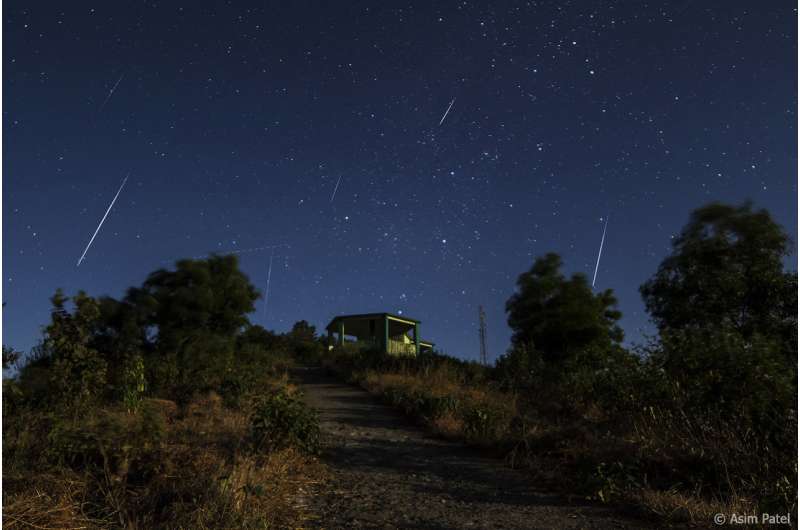Oh my stars! Stage set for 'spectacular' meteor show

A thin, waning moon should allow for uninterrupted views Wednesday night of the annual Geminid shooting star show, set to be "spectacular" this year, astronomers say.
At its height, the meteor shower should yield a shooting star every minute, offering plenty of opportunity for wish-making, they said.
Peaking on Wednesday night, it will be "particularly rich in bright meteors, or fireballs," the Irish Astronomical Association (IAA) said.
"There will be no moonlight to interfere so observing prospects this year are very good."
Meteors, or shooting stars, are produced when small particles from space enter the Earth's atmosphere at high speed, burn up, and streak across the sky.
The Geminid particles, so called because they appear from an Earthly perspective to be streaming out of the Gemini constellation, actually come from a mysterious space rock, about five kilometres (three miles) in diameter, called Phaethon.
"Phaethon's nature is debated," said Bill Cooke of NASA's Meteoroid Environment Office. "It's either a near-Earth asteroid or an extinct comet, sometimes called a rock comet."
Some astronomers say there may be more meteors this year because of Phaethon's close approach to Earth. Three days after the shower, it will shave past at a distance of about 6.4 million miles (10.3 million kilometres), or 26 times the distance of Earth to the moon.
Given its size and proximity, Phaethon is classified a "Potential Hazardous Asteroid—not the closest to Earth but "quite close for such a big one!" according to the IAA.
"Although there's no risk of a collision this time, it could potentially come much closer in future, which is why astronomers around the globe will be studying it closely this time."
An impact from a body of that size would be "catastrophic", causing tens or hundreds of millions of deaths, the IAA said.
In the meantime, though, Phaethon provides a yearly, December meteor fix.
The show can be observed from anywhere on Earth where the sky is clear and dark, though it is best viewed in the Northern Hemisphere.
"You'll need to be well away from cities and towns to escape the light pollution," the IAA said.
"You don't even need binoculars, just your own eyes. If coming out from a bright room, wait at least 10 minutes for your eyes to adapt to the dark outside."
© 2017 AFP



















